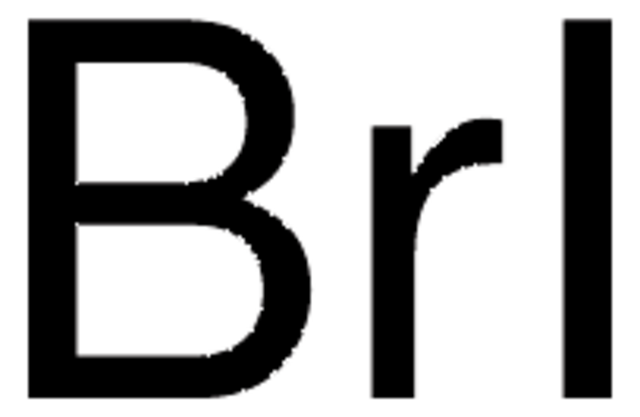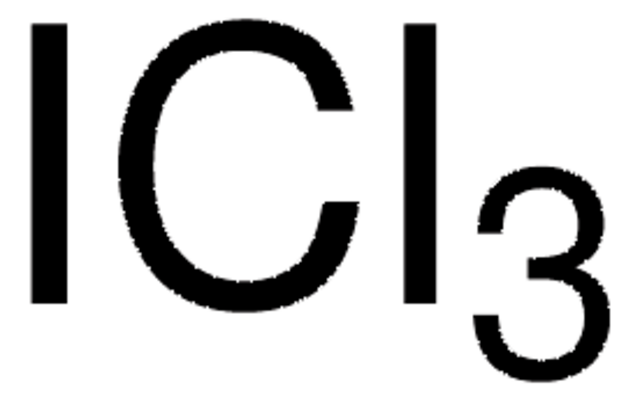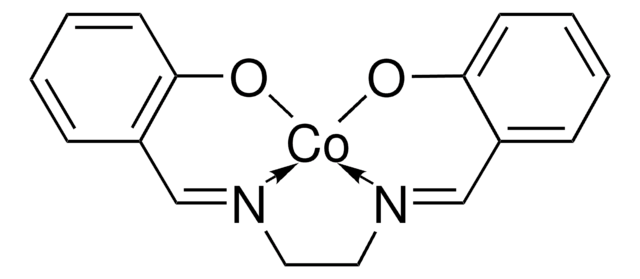714836
Iodine monochloride solution
1 M in acetic acid
Synonyme(s) :
Chloroiodide solution, Wijs solution
About This Item
Produits recommandés
Forme
solution
Niveau de qualité
Concentration
1 M in acetic acid
Densité
1.143 g/mL at 25 °C
Chaîne SMILES
ClI
InChI
1S/ClI/c1-2
Clé InChI
QZRGKCOWNLSUDK-UHFFFAOYSA-N
Vous recherchez des produits similaires ? Visite Guide de comparaison des produits
Description générale
Application
- As a reagent in the preparation of α-iodo β-ketosulfones from β-ketosulfones.
- In the synthesis of 3-(4-bromo-2-methylphenyl)-4-iodosydnone, which is further used to prepare substituted pyrazoles.
Mention d'avertissement
Danger
Mentions de danger
Conseils de prudence
Classification des risques
Eye Dam. 1 - Flam. Liq. 3 - Skin Corr. 1B
Code de la classe de stockage
3 - Flammable liquids
Classe de danger pour l'eau (WGK)
WGK 3
Point d'éclair (°F)
105.1 °F
Point d'éclair (°C)
40.6 °C
Faites votre choix parmi les versions les plus récentes :
Certificats d'analyse (COA)
Vous ne trouvez pas la bonne version ?
Si vous avez besoin d'une version particulière, vous pouvez rechercher un certificat spécifique par le numéro de lot.
Déjà en possession de ce produit ?
Retrouvez la documentation relative aux produits que vous avez récemment achetés dans la Bibliothèque de documents.
Les clients ont également consulté
Notre équipe de scientifiques dispose d'une expérience dans tous les secteurs de la recherche, notamment en sciences de la vie, science des matériaux, synthèse chimique, chromatographie, analyse et dans de nombreux autres domaines..
Contacter notre Service technique











